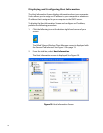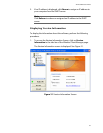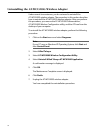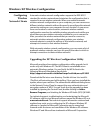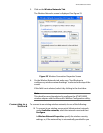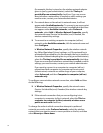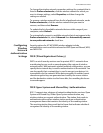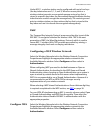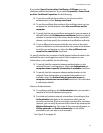AT-WCU200G User’s Guide
35
To change the wireless network connection settings for a network that is
listed in Preferred networks, click the wireless network for which you
want to change settings, select Properties, and then change the
settings as needed.
To remove a wireless network from the list of preferred networks, under
Preferred networks, click the wireless network that you want to
remove, and then select Remove.
To update the list of available networks that are within range of your
computer, select Refresh.
To automatically connect to available networks that do not appear in the
Preferred networks list, select Advanced then Automatically connect
to non-preferred networks check box.
Configuring
Wireless
Network
Authentication
Settings
Security options for AT-WCU200G wireless adapter include
authentication services which are based on WEP Open and Shared, WPA,
and WPA-PSK.
WEP (Wired Equivalent Privacy)
WEP is a set of security services used to protect 802.11 networks from
unauthorized access, such as eavesdropping (the capture of wireless
network traffic). With automatic wireless network configuration, you can
specify that a network key is used for authentication to the network. You
can also specify that a network key is used to encrypt your data as it is
transmitted over the network. When data encryption is enabled, secret
shared encryption keys are generated and used by the source station
and the destination station to alter frame bits, thus avoiding disclosure
to eavesdroppers.
WEP Open System and Shared Key Authentication
802.11 supports two subtypes of network authentication services: Open
System and Shared Key. Under Open System authentication, any
wireless station can request authentication. The station that needs to
authenticate with another wireless station sends an authentication
management frame that contains the identity of the sending station.
The receiving station then sends back a frame that indicates whether it
recognizes the identity of the sending station.




